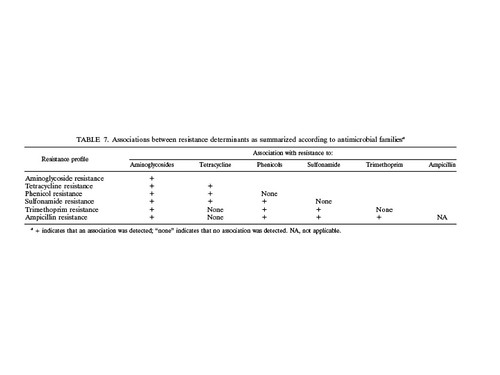New data show that antibiotic resistance genes travel together, at least in E. coli isolated from farms. Lookee, a picture:
These are the major types of antibiotics. Anytime you see a "+", that means that a gene that provides resistance to some or all of the antibiotic in that class*. For example, the second "+" in the first column means that E. coli with a tetracycline resistance gene are more likely than those without a tetracycline resistance gene to also have an aminoglycoside resistance gene. And by more likely, it's usually five to fifty times more likely.
When strains are resistant to multiple classes of drugs, not only are they harder to treat, but it is much harder to reduce resistance, since the use of any single drug 'drags along' all of the other resistance genes (the technical term is linkage).
If this were easy, I suppose we would have solved this by now....
- Log in to post comments


That's not a picture, that's a table. Pictures in scientific articles are called figures, and tables are called...tables. That's a table. It says so right on the top.
I included this in my introductory lectures back in the '70's. If fish taxonomist knew about this back in the 70's, what is new?
"When strains are resistant to multiple classes of drugs, not only are they harder to treat, but it is much harder to reduce resistance, since the use of any single drug 'drags along' all of the other resistance genes"
i like this article, thanks for sharing